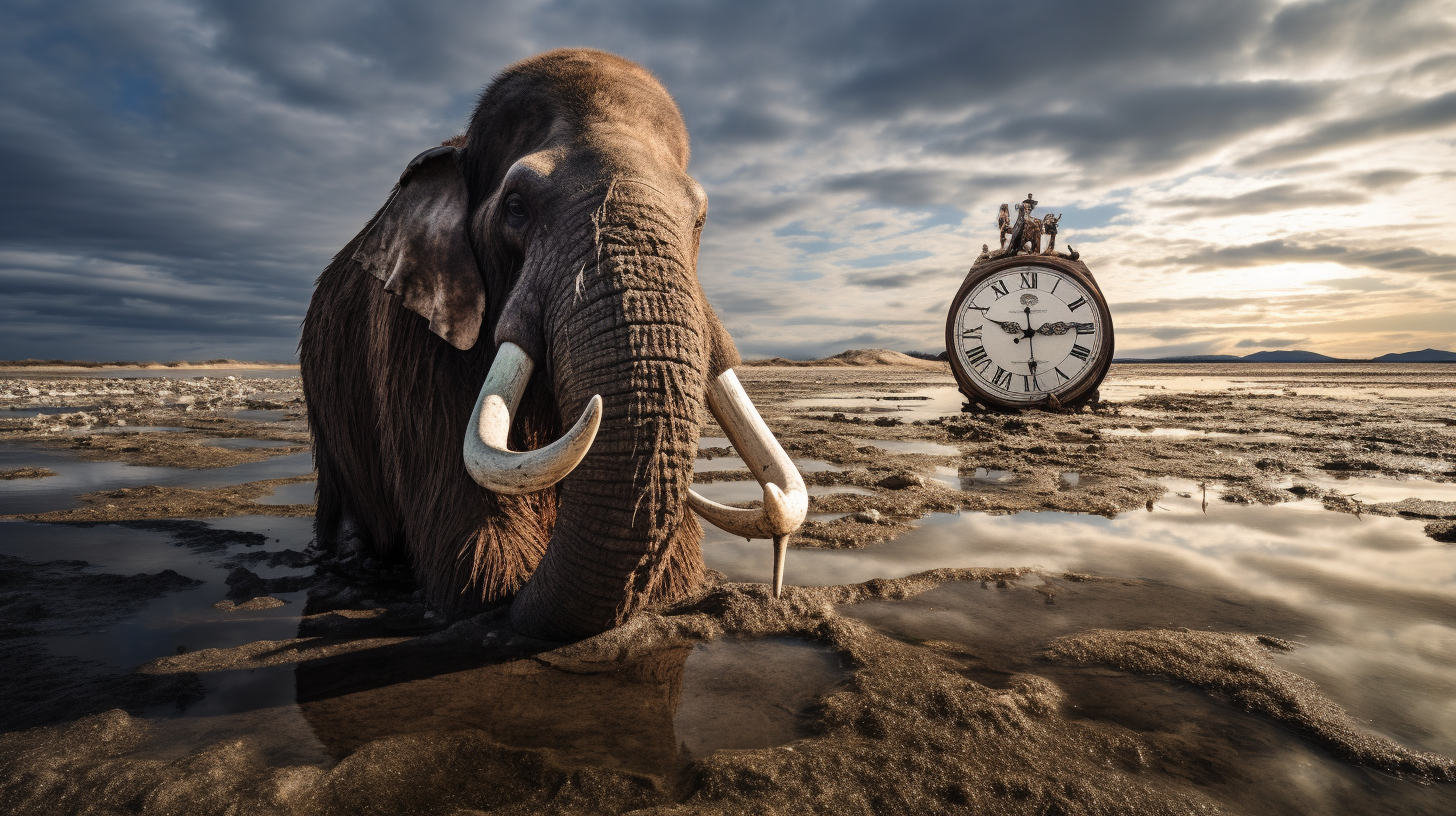In the shadows of a world scorched by relentless climate upheaval, the past refuses to remain buried. As the icy vaults of our planet’s cryosphere yield to the heat’s relentless embrace, they divulge long-hidden secrets from the Pleistocene epoch — a time when beasts of mammoth proportions roamed a world unscarred by human excess. The melting permafrost now unveils these Time Capsules of Climate Change, granting us a macabre window into an era that has more to teach us than we might willingly acknowledge.
Our journey into this prehistoric pandemonium begins with the revelation of towering Ice Age megafauna, these creatures seemingly stepping out of time’s murky mists Onto the modern stage. Preserved in alarming detail, the tusked behemoths and furred titans crisply emerge from their icy graves, their petrified roars a silent testament to a world that once was. Skeletal, with sinew and hide intact, they bear the unimaginable burden of enduring beyond their epoch.
In this era of relentless environmental disintegration, discovering such pristine specimens triggers a morbid fascination. We gaze upon them, not with the wonder of discovering new life, but with the heavy heart of archeologists sifting through the ruins of their own civilization. They serve as a grim forecast of what future beings might unearth of us — as relics of a society too consumed with growth to foster survival.
Amid the grandeur of these colossal relics lies a tale of ecological interconnectivity and of delicate balances disrupted. Experts believe that the extinction of these mammoth creatures contributed to ecological cascades, drastically altering flora and the atmospheric composition. Today’s scientists, like Dr. Aurelia Vasquez mentioned in our previous article, continue to piece together the puzzle, their research darkly mirroring our own potential destiny.
Yet, within these remnants of a bygone era, there is science to be harvested — data preserved in permafrost and bone, offering insights into past climate conditions and ecosystems. Research into these carcasses uncovers pathogens long entombed, potential pandemics frozen in time, that, upon release, could challenge humanity’s survival amid already compromised environmental conditions.
We are seduced by the echos of ancient DNA, a genetic heritage whispering tales of diversity and adaptation. These genetic time capsules afford scientists a retroactive view into evolutionary mechanisms that could inform our understanding of current biodiversity crises and perhaps guide our hand in preventing further ecological unravelings.
However, there is an ominous thread woven throughout this narrative: the rising global temperatures that facilitate these discoveries are the same that catalyze devastating wildfires, storms, and droughts. The irony is as inescapable as it is tragic. Those conditions that unveil the wonders of ancient life also herald the accelerated decline of present-day ecosystems.
The tale of Ice Age megafauna is both a warning and a wake-up call. By studying the past, we discern a pattern that’s as repetitive as it is ignored. The disappearance of these giants serves as a historical prelude to the current precipice upon which our own world teeters, poised between survival and collapse.
In drawing parallels from the past, we must not allow ourselves to be mere spectators, entranced by the narrative unfolding before us. The discovery of these Ice Age leviathans should not simply entertain or engage; they beckon with an urgent plea for introspection and action. They implore us to consider our mark upon the world and the legacy that we, too, will leave encased in the strata of time for future generations — or what’s left of them — to decipher.
As the curtain falls on these monolithic messengers of climatic consequence, we wonder: is the story of Ice Age megafauna merely a cautionary tale of a chapter long closed, or is it a prologue to our own foreseeable end? The answer lies perhaps, in the gnarled trunks of the Methuselah trees and the keening winds that whisper through our concrete jungles — if only we are willing to listen.
